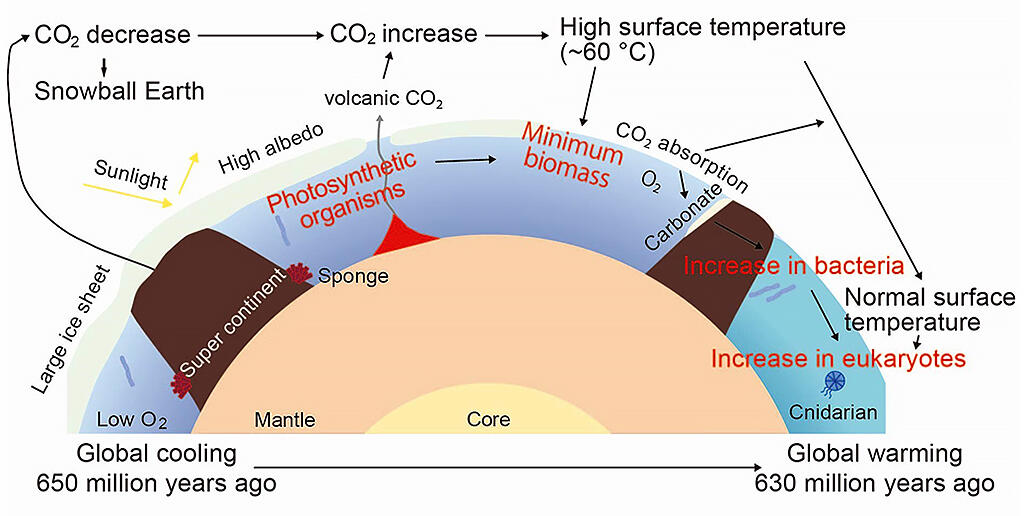It is known that the Earth froze over three times in history (Ice Ages): once 2.4 billion years ago and twice 700-600 million years ago. Photosynthetic organisms may have existed during the Snowball Earth period of 650-610 million years ago, but until now no direct evidence of this had been found.
Together with a research group from China University of Geosciences (Wuhan), Atena Shizuya (currently a research staff member of the Fukui Prefectural Dinosaur Museum) and Professor Kunio Kaiho (currently an emeritus professor at Tohoku University) of the Department of Earth Science, Graduate School of Science, Tohoku University, analyzed rock samples from the strata near the Three Gorges Dam in Hubei Province, China. They found evidence of the presence of photosynthetic organisms (algae) during the Snowball Earth period, low biomass during deiicing, and then an increase in eukaryote abundance. From the evidence they collected it can be inferred that biomass was at a minimum during the abnormally high temperatures of deicing, eubacteria increased as temperature decreased following this, and eukaryotes increased as the temperature normalizes. These findings were published in the journal Global and Planetary Change.
In 2011, this research group, together with a professor from the China University of Geosciences, collected rock samples from 650 to 540 million-year-old strata near the Three Gorges Dam. Since 2015, they have analyzed the organic molecules deposited in rock samples and calculated the quantitative ratio of the deposited organic molecules characteristic of photosynthetic organisms, eubacteria, and eukaryotes. Analysis of sedimentary organic molecules was performed on rock samples collected by digging the stratum, as the surface may be contaminated with plant soil and gas. No mixture of organic molecules other than that of the time of deposition was detected, and only data of organic molecules at the time of deposition was used in the analysis of photosynthetic organisms from the Snowball Earth, and they found evidence that photosynthetic organisms were present, albeit at low numbers.
According to Professor Kaiho, "Earth's organisms have evolved from Eubacteria to Archaea and then to Eukaryotes. Multicellular animals emerged from Eukaryotes 800-700 million years ago. They evolved from poriferans to cnidarians (sea anemones, jellyfish, etc.) and to bilaterally symmetric animals (arthropods, worms, vertebrates, etc.). The era analyzed in this study is from before the macroevolution of bilaterian animals (Cambrian explosion). It was an era of animal evolution. The relationship between this period's evolution and the Snowball Earth is still unclear, but this study's results may be key to clarifying their relationship."

© Kunio Kaiho
This article has been translated by JST with permission from The Science News Ltd.(https://sci-news.co.jp/). Unauthorized reproduction of the article and photographs is prohibited.




